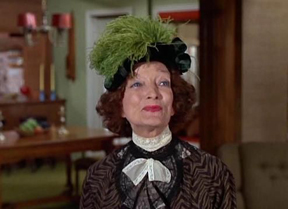
I remember Estelle Winwood as being a tiny person. She came to rehearsal clad in a very mod outfit, stylish boots, with her red hair peeking out from under a perky hat. And those enormous eyes!
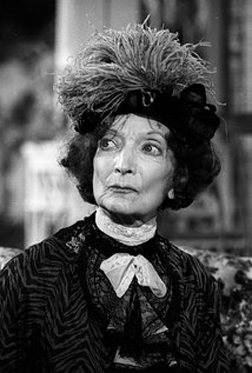
We met for the first rehearsal of THE CIRCLE on Monday night, the night after the Sunday evening read-through. Rachel Ames, my choice to replace the actress playing Elizabeth, joined the group. I was never told the reason for the previous director’s departure. Was it his choice to leave or was he requested to go? I did not know how long they had been in rehearsal. One week? Two weeks? I did not ask to view any staging that may have been accomplished. Since I was going to direct the production, I preferred to start from scratch. That first evening I sat the actors around a table and had them read the play. I felt it was necessary for Rachel, although unnecessary for the balance of the cast who had been involved in the production for an unknown length of time, plus I was not ready to put the cast on its feet and start blocking because I hadn’t had time to do my homework. You might ask just exactly what is a director’s homework?
Since we’re all different, I can only tell you how I was doing it twelve years after I graduated from the Pasadena Playhouse. American and English plays when published are divided into acts and scenes. I don’t know if they still do it, but published French plays were divided into what were referred to as “French” scenes: Whenever a character in a scene left the stage, or when a new character entered, that was a new scene. THE CIRCLE was a three-act play, but it had 34 French scenes. My first task was to break my script down into those 34 French scenes.
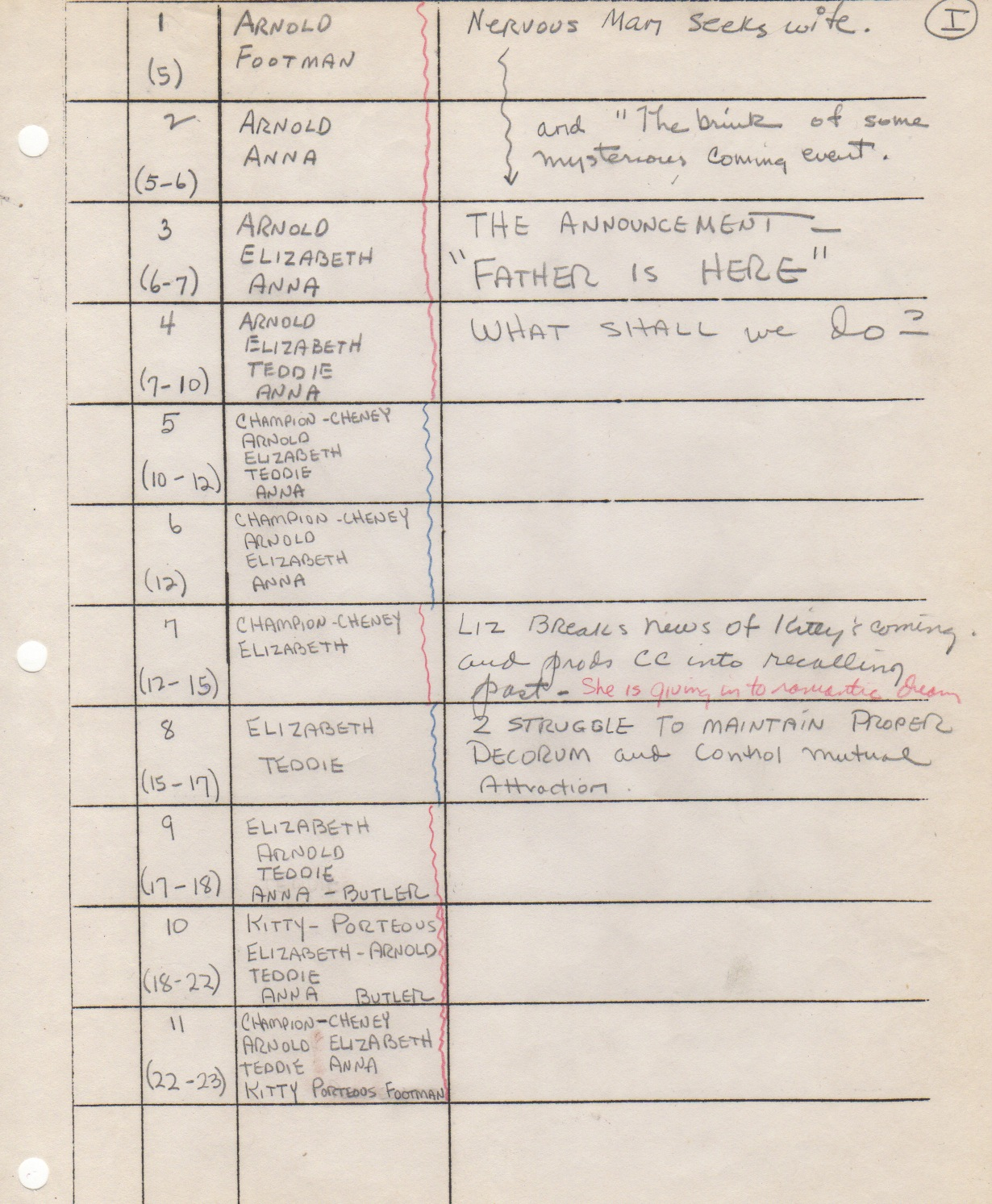
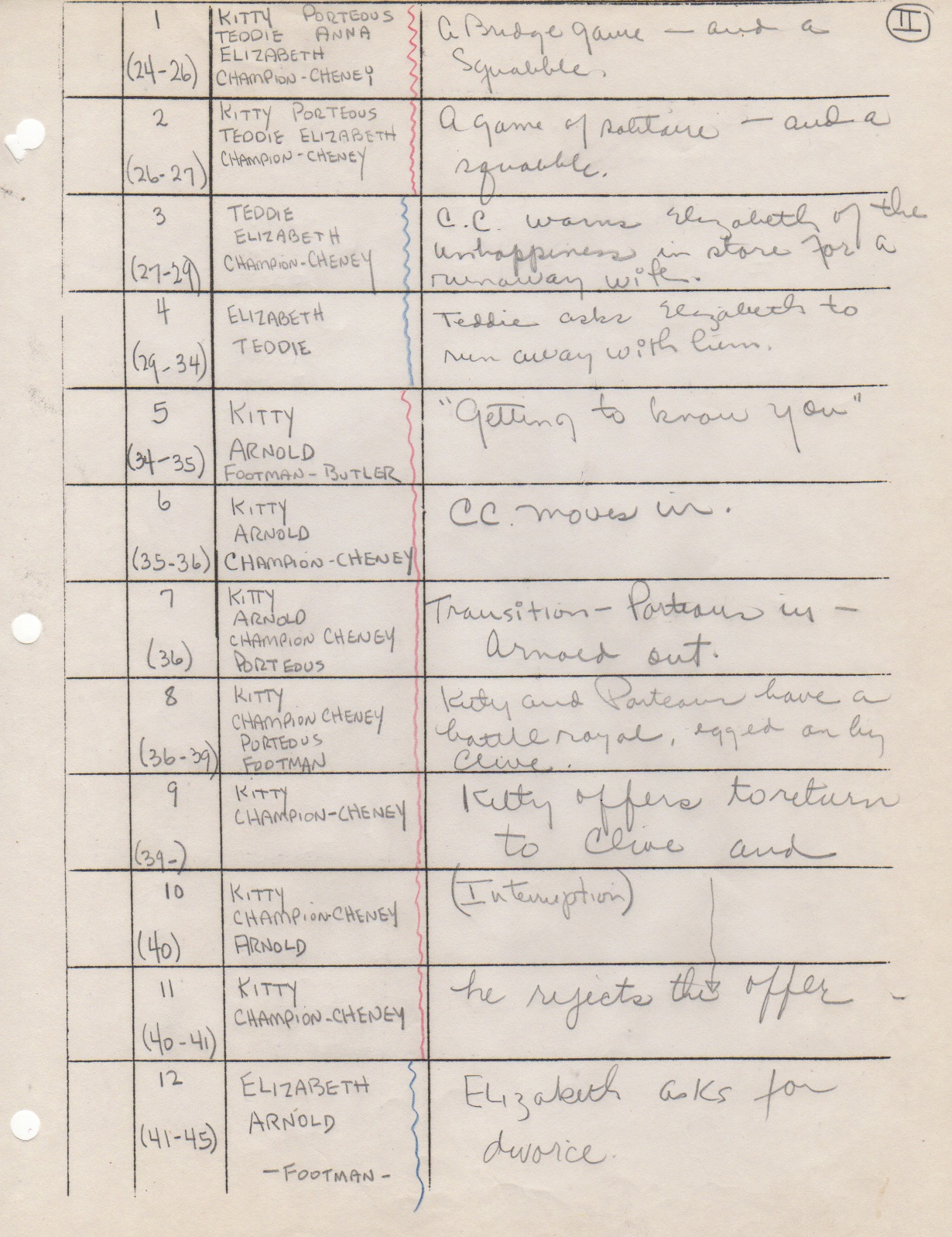
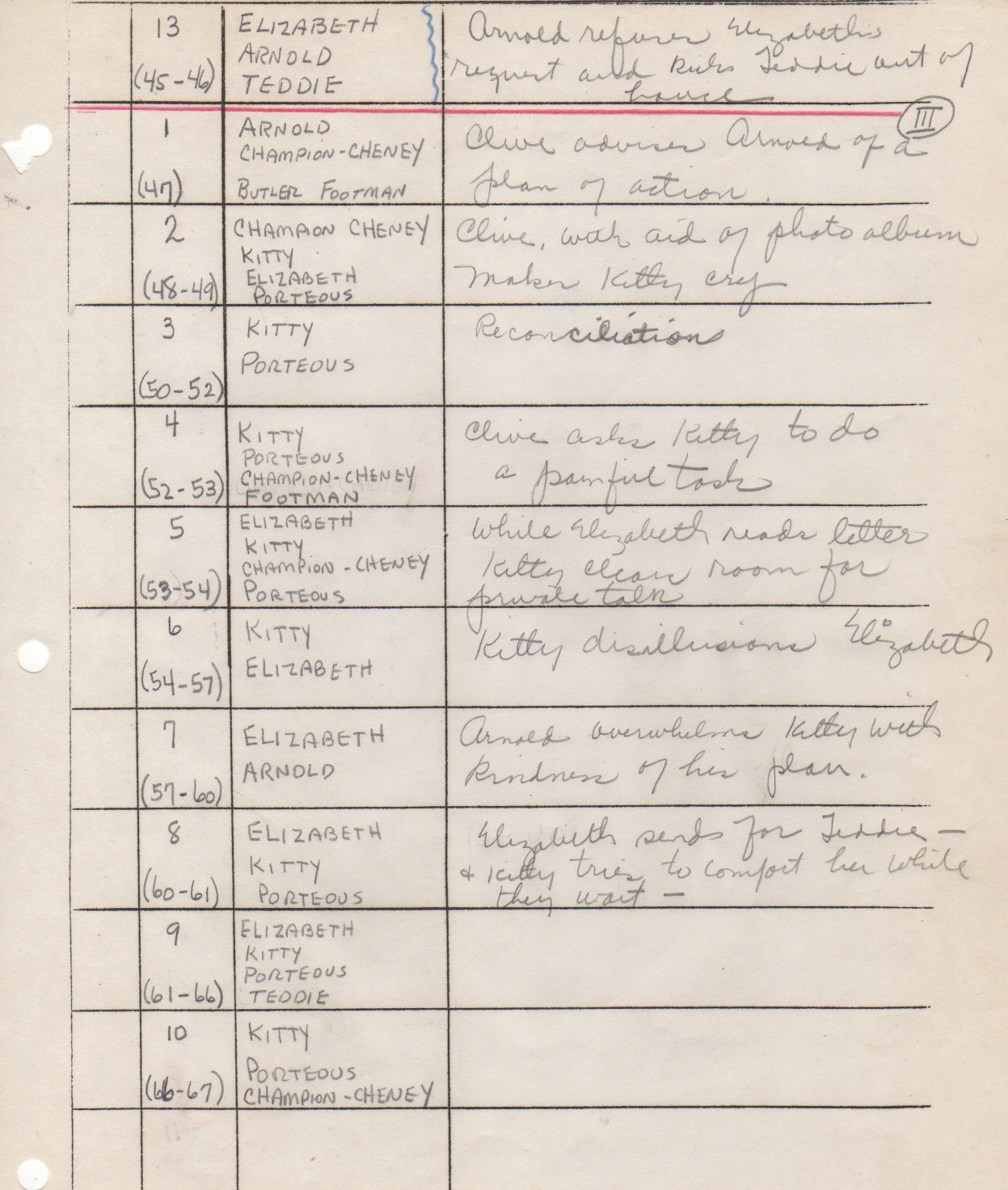
As you can see, I didn’t have time to do the job completely; there were some blank spaces in the column describing the action in the scene. Next I prepared a graph showing the cast of characters and the scenes in which they were involved.

That graph proved to be especially useful in scheduling my rehearsals. Supervising Director Barney Brown requested that each evening, because of her age, I rehearse Miss Winwood’s scenes first. I was told she was 78 years old. Interesting! Back then 78 was considered old. Today I consider it almost a part of my youth! (Now, thanks to the Internet and IMDB, I’ve learned she was only 77 years old.) So that was what I did for the first 10 days of my 2-week plus 3 days of rehearsal before our opening. Starting at the beginning of the play we rehearsed Miss Winwood’s scenes from 7:00 to 9:00, and she left. (We thought we were sending her home to rest. We discovered later she went instead to play bridge till the wee hours of the morning.) We then, returned to the beginning of the play and rehearsed the scenes without Lady Catherine, Miss Winwood’s character. During the final weekend before we moved onto the stage, we put it all together.
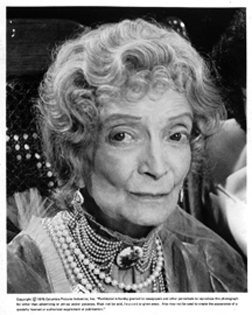
THE CIRCLE opened on Broadway in 1921. Estelle Winwood was in that cast, playing the younger role of Elizabeth with Mrs. Leslie Carter in the role of Lady Catherine. Winwood told me that she and her close friend Tallulah Bankhead had tried for years without success to mount a revival of the play with Bankhead playing Elizabeth and she as Lady Catherine. With this production her wish for a revival was finally being granted, although sans Bankhead.
As l put the play on its feet, things went surprisingly smoothly. I had been concerned about working with Winwood, after all she had been involved with the play starting two years before I was born. But she never objected or questioned any of my blocking or directions. I’m not sure now who, but one of the cast told me that she said of what I was doing, “Very interesting.”
Working with a legendary actress like Winwood was an education. Those performers provided insights you didn’t learn in any classroom. Rachel had a habit of using her forehead for emphasis. When she was speaking, she would thrust her head forward as if her forehead was making a point, putting an exclamation mark in her speech. Winwood told her she should go home and practice her speeches in front of a mirror with a book on her head. That way the energy she was expending on moving her head would go into her voice and into her speech.
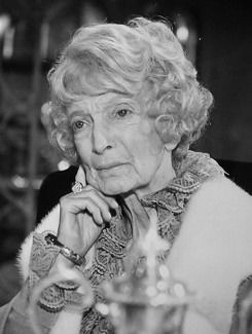
Act II opened with Lady Catherine and three of the cast playing bridge. The card playing was background to the scene’s conversation. The script called for the couple opposing Lady Catherine and her partner to win the game, so I blocked out who was to win which trick, no matter what cards were played. At no other time did I find Estelle Winwood to be a method actress. That only occurred when it came to her acting in the bridge-playing scene As an example when she played a card and the opposing player laid down his card and then as instructed reached out to pull the winning trick toward him, Winwood would speak up, “No, I won that trick.” Indeed her card was the high card on the table, which nobody in that large theatre would have been able to see, and she would reach out and pull the cards toward her. Fortunately I too played bridge, (but not at her level) so I ended up arranging the cards to forestall that happening. Since the scene started with one of the players dealing out the cards, I had to stack the deck!
Act III had a scene with Rachel as Elizabeth seated on a settee center stage with Jack Raine playing the ex-husband of Lady Catherine. They were looking through an old photo album. During the scene Lady Catherine was seated on a pouffe down left. One evening as we rehearsed the scene after Winwood had left, Jack Raine grinningly said. “It doesn’t matter what we do. Estelle is seated down left, alone and with a fan and a newspaper. We don’t stand a chance.” He then told us one of the classic theatre stories. Estelle Winwood was appearing in a production of THE COCKTAIL PARTY at the Las Palmas Theatre in Hollywood. She was in a scene with Marsha Hunt. The two were seated on a settee center stage. Winwood held a martini glass in her right hand. When she delivered one of her speeches, she opened up to the audience, and then as she finished and turned to look at Miss Hunt seated at her right, the martini glass tipped forward, the liquid going to the very brim of the glass. When Hunt finished speaking, Winwood opened to the audience as the glass righted itself and delivered her speech. When she finished, she again turned to Miss Hunt, the glass again tipped forward, and the martini again crept to the very brim of the glass. That continued throughout the entire scene. Guess who and what that audience was looking at.
Two weeks after we started rehearsing in the rehearsal room, we moved onto the stage for our final three days before opening. The play preceding us in the theatre had closed the night before, our set had been erected on the stage, and we began the final countdown to opening. As we rehearsed, the lighting director was lighting the show, and the actors started appearing in the wardrobe they would be wearing. Rachel’s mother, Dorothy Adams, arrived that first night. Dorothy Adams was one of the great character actresses of Hollywood.
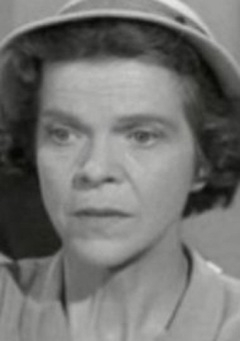
As a student at the playhouse a dozen years before I had seen Doro (as she was known) play JOAN OF LORRAINE on the very stage on which we were rehearsing. I had seen her play Birdie in ANOTHER PART OF THE FOREST, and I had seen her in so many films. I met her three years earlier when Rachel appeared in my production of THE IMMORALIST at the HORSESHOE THEATRE in Hollywood. But I had an earlier encounter, if not with her, with her image in 1945. I was in the armed services and stationed outside of Liege, Belgium. During that cold winter I was taking a 16mm projector into the field, running movies for the troops. One time I was showing LAURA to a group. Dorothy Adams was playing Gene Tierney’s maid. There was a scene where Dana Andrews came to a cocktail party Laura was giving and arrested her. At that point the maid (Doro) screamed, and that was the end of the reel. The guys in the tent groaned, and as I took the reel off the projector and put the final one on, I said, “Wouldn’t this be a terrible time for the projector to break down!” And it did. That was when the groans got even louder. I returned the following day to play the final reel. Unfortunately not all of the men at the earlier screening were able to attend.
Back to our rehearsal! Doro didn’t like the gown wardrobe had provided Rachel. The next day she went into one of the Costume houses in Hollywood and brought her a lovely white chiffon gown. I totally approved. There were some hurt feelings in the Playhouse wardrobe department, but Dorothy Adams was too much a part of the Playhouse past for any objections to be voiced.
At the Playhouse, the Green Room was below the stage. It was a large room lined with individual dressing rooms. During one of the dress rehearsals I went into Winwood’s dressing room as she was completing her make-up and saw something I had never seen before and have never seen since. She was applying beaded wax to her false eyelashes.
We opened Thursday night with a flawless performance. Jack Raine’s prediction did not occur. Miss Winwood dominated the stage without pulling any of her scene-stealing tricks.


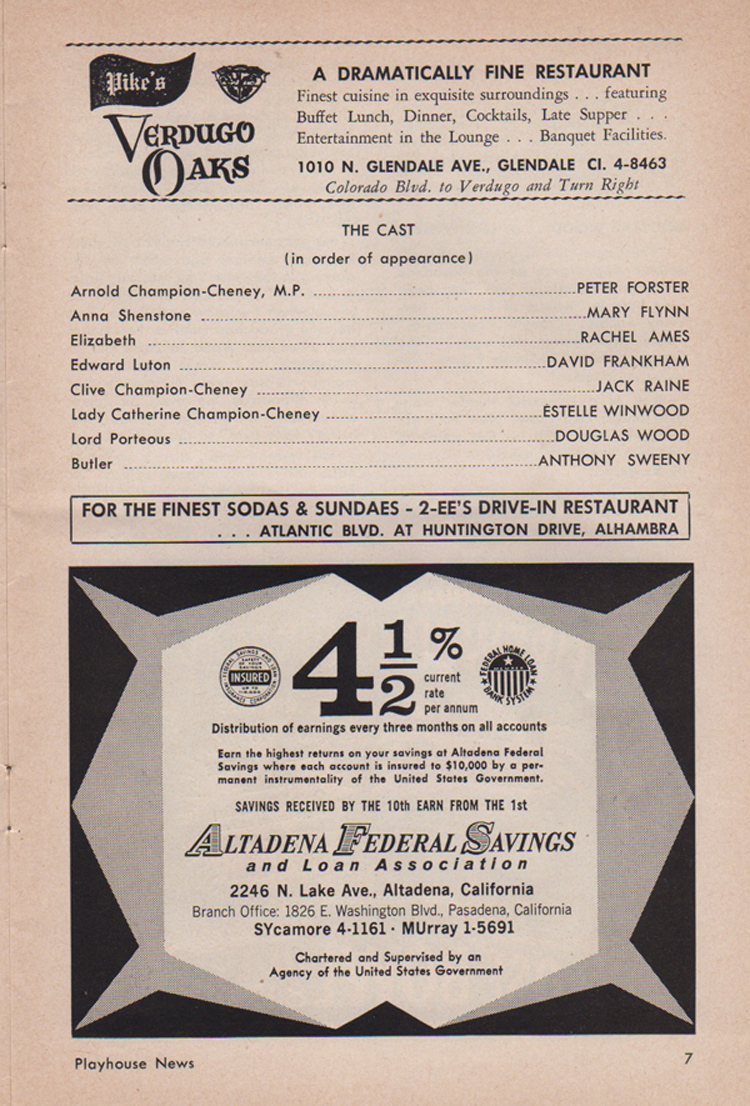
The reviews were raves. My favorite was Patterson Greene’s in the Los Angeles Examiner. He referred to the performance as “pure gold.”
How does this adventure fit into my “journey?” Norman Felton, a CBS executive, commented on the reviews as he had the previous month for the reviews of MORNING’S AT SEVEN. This play, which I originally turned down, proved to be another step forward. I didn’t know it then, but one year in the future I would be the Assistant to the Producer on DR. KILDARE; sixteen months from then I would be directing my first television film, JOHNNY TEMPLE, an episode of DR. KILDARE.



Great story Ralph!
Ralph, your meticulous preservation of your notes, documents, scripts through the years continues to amaze.
More plays, please. I would have liked to have heard even more of THE CIRCLE.
And this:
Your Casting Graph is brilliant. I can see the numbers below the blocked portions are the French scenes, but what do the numbers to the right each of the scenes represent? Are these page #s?
You got it! The numbers to the right are the pages in the script. I didn’t know it at the time, but the graph is a forerunner of the production boards I would encounter in film.
Ralph, is the Supervising Director the person who takes over as Director after opening night? If yes, does he exert any creative influence during the play’s run? Do you recall how many performances this one had? Until I saw the end of the movie ‘The Country Girl’, I didn’t know that the “original” director leaves a play after opening night.
In the case of the Pasadena Playhouse, the Supervising Director was the Artistic Director for the organization. Originally that was Gilmor Bown, who was the original founder the Playhouse. I don’t remember how long we ran. When I was a student the Playhouse opened a new show every other Thursday. By 1960 the runs were longer, probably as long as attendance stayed up.
Relayed from Marlyn Mason:
My phone rejected your Senensky.com. Can you copy and paste it?
Hi Ralph! Yo know this story but think your fans will enjoy it, too…
hi, everyone!!
I met and worked with Ms Winwood on LOVE AMERICAN STYLE (with Arte Johnson; one of the highest rated episodes). When I introduced myself to her she replied” SAVE YOUR MONEY, MY DEAR, SO WHEN YOU GET TO BE MY AGE YOU WON’T HAVE TO BE DOING…THIS!!
Later, we worked together again on the very last PERRY MASON. I have another story but it requires an audience. She was a riot to work with.
Marlyn
Sent from my iPhone